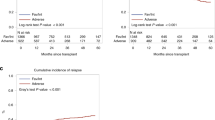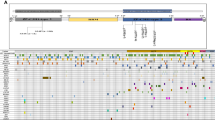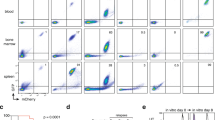Abstract
A large proportion of lower-risk myelodysplastic syndromes (MDS) respond to erythropoiesis-stimulating agents (ESA), but most responses are transient. We updated a previously reported cohort of lower-risk MDS patients treated with ESA and analyzed outcomes after ESA failure. In 120 patients with primary resistance and 66 patients with relapse after an initial response to ESA, the 5-year cumulative incidence of acute myeloid leukemia (AML) after failure was 18.9% and 11.6%, respectively (P=0.20). Median overall survival (OS) after failure was 40.1 and 44.9 months (P=0.35), respectively. We further categorized patients as ‘early failures’ (including resistance and relapse after <6 months of response), or ‘later failures’ (that is, relapse after ⩾6 months). The 5-year cumulative incidence of AML and median OS after failure in early and later failure were 21.6% and 9% (P=0.02) and 36.7 and 54.3 months (P=0.02), respectively. Early failure to ESA and a baseline diagnosis of refractory anemia with excess blasts (RAEB)-1 were independent prognostic factors for AML progression and, along with trisomy 8, for shorter OS. Median OS from treatment onset was 40, 90.7 and 65.8 months in early failure, later failure and no relapse, respectively (P=0.001). Lower-risk MDS with early failure to ESA have a relatively unfavorable outcome, and should be offered alternative treatments.
This is a preview of subscription content, access via your institution
Access options
Subscribe to this journal
Receive 12 print issues and online access
$259.00 per year
only $21.58 per issue
Buy this article
- Purchase on SpringerLink
- Instant access to full article PDF
Prices may be subject to local taxes which are calculated during checkout



Similar content being viewed by others
References
Bennett JM, Catovsky D, Daniel MT, Flandrin G, Galton DA, Gralnick HR et al. Proposals for the classification of the myelodysplastic syndromes. Br J Haematol 1982; 51: 189–199.
Greenberg P, Cox C, LeBeau MM, Fenaux P, Morel P, Sanz G et al. International scoring system for evaluating prognosis in myelodysplastic syndromes. Blood 1997; 89: 2079–2088.
Hellstrom-Lindberg E, Negrin R, Stein R, Krantz S, Lindberg G, Vardiman J et al. Erythroid response to treatment with G-CSF plus erythropoietin for the anaemia of patients with myelodysplastic syndromes: proposal for a predictive model. Br J Haematol 1997; 99: 344–351.
Park S, Grabar S, Kelaidi C, Beyne-Rauzy O, Picard F, Bardet V et al. Predictive factors of response and survival in myelodysplastic syndrome treated with erythropoietin and G-CSF: the GFM experience. Blood 2008; 111: 574–582.
Jädersten M, Malcovati L, Dybedal I, Della Porta MG, Invernizzi R, Montgomery SM et al. Erythropoietin and granulocyte-colony stimulating factor treatment associated with improved survival in myelodysplastic syndrome. J Clin Oncol 2008; 26: 3607–3613.
Greenberg PL, Sun Z, Miller KB, Bennett JM, Tallman MS, Dewald G et al. Treatment of myelodysplastic syndromes patients with erythropoietin with or without granulocyte colony-stimulating factor: results of a prospective randomized phase III trial by the Eastern Cooperative Oncology Group (E1996). Blood 2009; 114: 2393–2400.
Kelaidi C, Park S, Brechignac S, Mannone L, Vey N, Dombret H et al. Groupe Francophone des Myélodysplasies (GFM). Treatment of myelodysplastic syndromes with 5q deletion before the lenalidomide era; the GFM experience with EPO and thalidomide. Leuk Res 2008; 32: 1049–1053.
Schanz J, Tüchler H, Solé F, Mallo M, Luño E, Cervera J et al. New comprehensive cytogenetic scoring system for primary myelodysplastic syndromes (MDS) and oligoblastic acute myeloid leukemia after MDS derived from an international database merge. J Clin Oncol 2012; 30: 820–829.
Cheson BD, Bennett JM, Kantarjian H, Pinto A, Schiffer CA, Nimer SD et al. Report of an international working group to standardize response criteria for myelodysplastic syndromes. Blood 2000; 96: 3671–3674.
Cheson BD, Greenberg PL, Bennett JM, Lowenberg B, Wijermans PW, Nimer SD et al. Clinical application and proposal for modification of the International Working Group (IWG) response criteria in myelodysplasia. Blood 2006; 108: 419–425.
Swerdlow SH, Campo E, Harris NL, Jaffe ES, Pileri SA, Stein H et al WHO Classification of Tumours of Haematopoietic and Lymphoid Tissues. IARC Press: Lyon, France, 2008.
Kaplan E, Meier P . Nonparametric estimation from incomplete observation. J Am Stat Assoc 1958; 53: 457–481.
Peto R, Peto J . Asymptotically efficient rank invariant test procedures. J R Stat Soc Ser A 1972; 135: 185–198.
Fine J, Gray R . A proportional hazards model for the subdistribution of a competing risk. J Am Stat Assoc 1999; 94: 496–509.
Cox DR . Regression models and life tables. J R Stat Soc Ser B 1972; 34: 187–220.
Greenberg P, Tuechler H, Schanz J, Sole F, Bennett JM, Garcia-Manero G et al. Revised International Prognostic Scoring System (IPSS-R), developed by the International Prognostic Working Group for Prognosis in MDS (IWG-PM). Leuk Res 2011; 35 (Suppl 1): 6.
Garcia-Manero G, Shan J, Faderl S, Cortes J, Ravandi F, Borthakur G et al. A prognostic score for patients with lower risk myelodysplastic syndrome. Leukemia 2008; 22: 538–543.
Della Porta MG, Malcovati L, Boveri E, Travaglino E, Pietra D, Pascutto C et al. Clinical relevance of bone marrow fibrosis and CD34-positive cell clusters in primary myelodysplastic syndromes. J Clin Oncol 2009; 27: 754–762.
Malcovati L, Porta MG, Pascutto C, Invernizzi R, Boni M, Travaglino E et al. Prognostic factors and life expectancy in myelodysplastic syndromes classified according to WHO criteria: a basis for clinical decision making. J Clin Oncol 2005; 23: 7594–7603.
Zipperer E, Pelz D, Nachtkamp K, Kuendgen A, Strupp C, Gattermann N et al. The hematopoietic stem cell transplantation comorbidity index is of prognostic relevance for patients with myelodysplastic syndrome. Haematologica 2009; 94: 729–732.
Acknowledgements
We are indebted to Professor Sylvie Chevret (Hospital St Louis, Paris), who independently reviewed all the biostatistical procedures.
Author information
Authors and Affiliations
Consortia
Corresponding author
Ethics declarations
Competing interests
The authors declare no conflict of interest.
Additional information
Results partly presented at the 52nd American Society of Hematology Annual Meeting, December 2010.
Supplementary Information accompanies the paper on the Leukemia website
Supplementary information
Rights and permissions
About this article
Cite this article
Kelaidi, C., Park, S., Sapena, R. et al. Long-term outcome of anemic lower-risk myelodysplastic syndromes without 5q deletion refractory to or relapsing after erythropoiesis-stimulating agents. Leukemia 27, 1283–1290 (2013). https://doi.org/10.1038/leu.2013.16
Received:
Revised:
Accepted:
Published:
Issue date:
DOI: https://doi.org/10.1038/leu.2013.16
Keywords
This article is cited by
-
Stanozolol for the treatment of anemic lower-risk myelodysplastic syndromes without del(5q) after failure of epoetin alfa: findings from a retrospective study
Annals of Hematology (2021)
-
Novel combinations to improve hematopoiesis in myelodysplastic syndrome
Stem Cell Research & Therapy (2020)
-
Which lower risk myelodysplastic syndromes should be treated with allogeneic hematopoietic stem cell transplantation?
Leukemia (2020)
-
Evolving therapies for lower-risk myelodysplastic syndromes
Annals of Hematology (2020)
-
Myelodysplastic Syndromes: How to Recognize Risk and Avoid Acute Myeloid Leukemia Transformation
Current Oncology Reports (2020)



